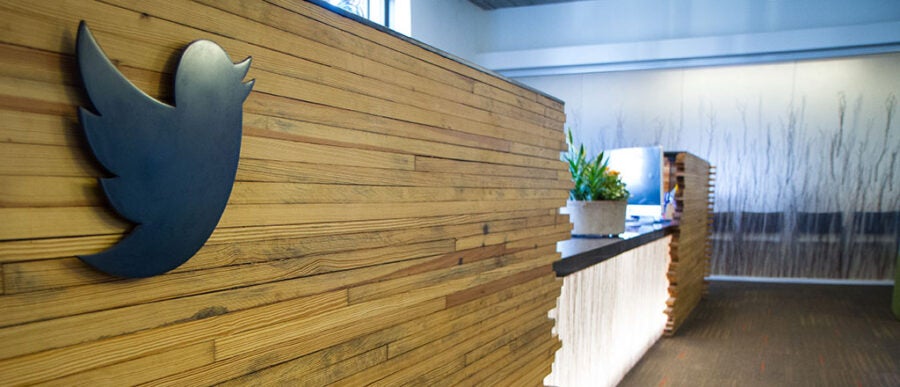Twitter’s user growth has stalled, with monthly active users dropping from 307 to 305 million between the third and fourth quarters of last year, and spurring worry about the long-term prospects of the company. Can Twitter become a trailblazing media company akin to Facebook? Or will it face a decline in growth similar to companies like Yahoo?
To foster more engaged users, Twitter needs to create some of the “stickiness” that keeps people coming back to frequently check Facebook. One bright spot on the company’s fourth quarter earnings report was a 48% bump in ad revenue from a year ago. But Twitter, which will turn 10 in March, faces the potential of alienating dedicated users if it ventures too far into paid content, or if it tinkers too much with the model that made it attractive to people in the first place — for example, the site has already been criticized by users about reports that it might abandon the 140-character limit for tweets or deviate from the site’s current chronological timeline. But Twitter could thrive if it can find ways to capitalize on its strengths. Possible strategies for success include moving to a subscription model, providing key product enhancements and more effectively leveraging the volumes of data generated by the service, according to Wharton experts.
“What makes Twitter struggle and what makes Twitter successful are the same things,” says Pinar Yildirim, a marketing professor at Wharton. “Online platforms can become successful if they can utilize consumer social networks to acquire more consumers. If Twitter users can motivate others to join and keep each other active, then Twitter has a good chance of success. Unfortunately, this is not the way the site is structured. It operates on individuals sharing information, rather than individuals who are within a social network or friends.”
To Yildirim, Twitter is very different from Facebook because it’s not as personal. Twitter is a “could-be or wanna-be network where consumers share and receive information from many strangers and friends.”
Kevin Werbach, a legal studies and business ethics professor at Wharton, says there is disconnect between growth expectations for Twitter and its role in the world. “Twitter is a growth stock that isn’t growing, at least in terms of users. Because of its widespread adoption by thought leaders, celebrities and companies, Twitter has always been more influential than its user numbers suggest,” says Werbach. “It’s the closest thing we have to a mirror of the real-time Internet, which is tremendously important, but that doesn’t mean it’s the most valuable service by the growth and monetization standards of Wall Street.”
Indeed, Twitter captures the real-time Internet well. The company thrives during live events like the Super Bowl or breaking news events such as the Paris terrorism attacks or the recent death of Supreme Court Justice Antonin Scalia. Since stepping back into the CEO role at Twitter in July, co-founder Jack Dorsey has tried to refocus Twitter on its core DNA. In a shareholder letter released February 10, Dorsey said: “Twitter has always been considered a ‘second screen’ for what’s happening in the world, and we believe we can become the first screen for everything that’s happening now.”
Indeed, Twitter delivered 2015 revenue of $2.22 billion, up from $1.4 billion in 2014. The company had an annual net loss of $521 million.
Dorsey outlined five priorities for 2016 in order to boost Twitter’s engagement and growth. Twitter will simplify its service and boost video through its Periscope service. It will also marshal influential people to use the platform and implement safety features to make the service safer for new users. Finally, Twitter will invest in hiring additional software developers to create new features.
“What makes Twitter struggle and what makes Twitter successful are the same things.”–Pinar Yildirim
David Hsu, a management professor at Wharton, says that Dorsey’s final point is critical. Twitter is in a race for technical talent and competes with the likes of Google and Facebook. Twitter’s stock declines, as well as slow feature rollouts, may turn away talent. “In many ways, Twitter has rested on its laurels. There’s no doubt that Twitter is a very effective means of communication, but it doesn’t have the stickiness for the average person,” explains Hsu. “What has Twitter done to move the needle on the product over the last five years? There’s the shadow of Yahoo there.”
Add in the management upheaval prior to Dorsey taking over, and it’s understandable that the product roadmap for Twitter has suffered. Dorsey was the CEO shortly after Twitter’s founding, but then yielded the reins to co-founder Evan Williams in 2008. Dick Costolo took over as CEO of Twitter in 2010, before ceding the helm back to Dorsey.
Dorsey added in the shareholder letter that he was confident in Twitter’s product plans for both users and marketers. “Our work now is to set ourselves up to have even greater impact over the next 10 years. We are confident we will.”
On a conference call February 10, Dorsey said Twitter is a revamped company with better focus. “We spent the last six months structuring the organization and our leadership team to move with greater agility and focus, reviewing the state of our service and strategy, learning from what we’ve shipped, and developing a stronger point of view about what we are and what we want to be,” said Dorsey.
Daniel Levinthal, a management professor at Wharton, says Dorsey is capable, but notes he is splitting his time between two companies. Dorsey is also the CEO of Square, an e-commerce payments company. “Having a part-time CEO is, in my view, inherently flawed. A board chair who has an operational role at another company can work fine. But for companies of the scale and dynamism of Square and Twitter, a dual operating chief doesn’t seem healthy” for the executive or the two companies, says Levinthal.
Given all the moving parts in Twitter’s business, it’s unclear what the firm’s growth expectations should be. Investors want more growth in the user base, but Levinthal says Twitter may have maxed out to some degree.
“A common pathology for both firms and the stock analysts who follow them is to extrapolate from high growth rates,” he notes. “The world has finite size and so do all markets. Unlike telephone services or messaging apps, Twitter is not going to have universal adoption, and inevitably there was going to be some plateauing of its rate of adoption by new users.”
“In many ways, Twitter has rested on its laurels. There’s no doubt that Twitter is a very effective means of communication, but it doesn’t have the stickiness for the average person.”–David Hsu
Niche or Not?
But Peter Fader, a marketing professor at Wharton, doesn’t view Twitter as a niche social network. Yes, the company needs to develop more engagement among users, but he says it has an edge in live content that no other network has developed.
“I don’t see Twitter as niche, but as a behemoth in its space of microblogging,” says Fader. “You could argue that Twitter goes head-to-head with Facebook, but for what it does, Twitter dominates. Twitter is big, and no one has figured out how to do it better. It’s interesting to me that Facebook has adopted more Twitter features than the other way around.”
Hsu agrees that Twitter can stand on its own. “The core of Twitter is fast information. That’s why it is better than The New York Times or CNN. Twitter allows anyone to be the reporter and have a broadcast channel.”
Dorsey said on Twitter’s earnings conference call that the company is “investing heavily” in its Periscope business and the technology that goes with it, with the aim of better integrating video and tweets.
There are two key challenges to Twitter’s future growth, Wharton experts say. The first challenge is to avoid pursuing growth in a way that would dilute the primary draw of Twitter for its most devoted users. The second is to develop features and a business model that boost engagement.
For example, Twitter was rumored to be considering removing the 140-character limit on tweets, an idea Fader called “a disaster.” He noted that longer tweets would bog down the social networks’ content and ruin the experience on a mobile device, which is the source of the majority of Twitter’s traffic.
Hsu adds that Twitter’s “value is the shortness…. I’d rather have Twitter think about ways to make that platform more valuable.”
Dorsey’s plan to double down on live and fast-moving content, which can be curated through a new feature called Moments that outlines the top trends on Twitter, makes sense, but Yildirim says the company needs to add value around rapid-fire information. “It is not clear exactly what users or companies are getting out of this continuous information exchange,” she says.
“It is more important to keep the users on the platform active, and their activity will naturally keep others active and attract more people,” she adds. “The main reason why people are unhappy with the growth platform of online social networks is because it is symptomatic of the activity levels of current users.”
Dorsey said Twitter plans to take real-time events and develop conversations around them to boost engagement. “Once you see an event unfold on Twitter, there’s a real sense of electricity. There’s a real sense of being real time, being in the now, being in the know about everything that’s happening,” said Dorsey. “And then you start getting into more of the stronger, stickier value propositions for the service around messaging.”
Werbach says Twitter needs to solve its engagement issues quickly since other messaging platforms are emerging and could usurp the company’s role. “Twitter was the first major social media platform built on a messaging framework [originally, SMS]. Ironically, it’s now at risk of losing out to bigger or faster-growing messaging-based services such as Snapchat, WhatsApp and WeChat,” he notes. “There’s only room for so many tools as foundational infrastructure for Internet users.”
“Twitter was the first major social media platform built on a messaging framework…. Ironically, it’s now at risk of losing out to bigger or faster-growing messaging-based services such as Snapchat, WhatsApp and WeChat.”–Kevin Werbach
Twitter Premium vs. Ad Growth?
The other side of the engagement equation for Twitter is marketing and advertising.
Today, most of Twitter’s revenue comes from advertising. In Twitter’s shareholder letter for the fourth quarter, Dorsey said the company had 130,000 active advertisers, more small businesses using the service and larger companies that used the platform as a customer service channel. Citing a McKinsey study commissioned by Twitter, Dorsey said the volume of customer service conducted on Twitter has grown 2.5 times over the last two years.
Twitter also has a treasure trove of data from the real-time tweets that flow through its systems. This data is used in analytics applications from Twitter partners such as IBM and Dataminr. That data could be monetized in new ways, experts say.
For now, Dorsey indicated Twitter is focused on making tools for advertisers. Hsu says Twitter could use its data to find new markets to boost licensing revenue. Twitter’s revenue from data licensing and other business was $70 million in the fourth quarter, up 48% from a year ago, but that is much smaller than the $641 million in ad revenue.
Fader says Twitter can grow its advertising business, but subscriptions may be the best path forward, and notes that the blueprint for Twitter subscriptions has already been established by LinkedIn. “Advertising won’t work long term for Twitter because it violates the principles of the user experience,” he says. “Twitter Premium could be ad-free and offer new functionality.”
Hsu says Twitter could also be more useful to large companies, who could pay a subscription to aggregate conversations about their brands. Twitter’s platform could be used to brainstorm, aggregate collective knowledge and capture internal conversations.
Fader says Twitter would face challenges in becoming an enterprise vendor, but still could charge consumers to offer better search capabilities, analytics and dashboards with its data. “Twitter could charge a small amount and offer something similar to the LinkedIn model,” says Fader. “This subscription service would be rolled in gradually.”
Yildirim says the real value in Twitter may be its data. “Twitter, like Facebook, has a great opportunity to build and sell ads or targeted Tweets to consumers, but also can share data on consumers,” she says. “Since Twitter has information about the professional circles and interests of individuals through the personalities and brands they follow, it is sitting on a gold mine if it can utilize data potentially more effectively than Facebook.”



